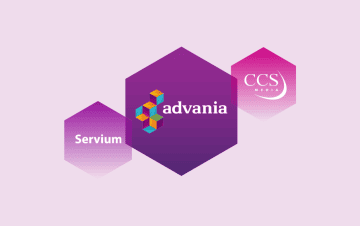Avoid cloud turbulence with a well-architected framework
In our cloud series so far, we’ve given you run-up for taking your first steps into the cloud – covering the benefits it can offer, the paths you can take, and the best ways to make it work for your entire business. This new instalment offers vital guidance as you continue your cloud journey – in particular, how do you make sure your cloud is properly architected?
It’s an important question to ask, after all if you were deploying new infrastructure on-premises this would be an essential step to ensuring hardware and software configurations worked together, the environment was properly sized to your capacity needs and performance requirements. As you may have expected, all of the big three hyperscalers have some type of framework for architectural best practices. For Google Cloud, it’s the straightforwardly named Google Cloud Architecture Framework, and for AWS and Azure, it’s called the Well-Architected Framework.
For simplicity’s sake, since all these frameworks share common ground, we’ll talk about a generic well-architected framework, or WAF for short.
What is a well-architected framework?
A WAF is essentially a set of benchmarks for different aspects of a cloud environment – the exact pillars that make up the approach differ from framework to framework, but there are a few that are common to almost all WAFs: security, performance, and cost optimisation being the heavy hitters.
Each of these consists of a set of best practices that you can test your cloud environment against. For example, a cost optimisation framework might check if you’re using tools offered by a provider to help track and manage costs, and, if you are, to what extent you’re leveraging these tools to make sure you aren’t paying for capacity you don’t need.
With each different aspect combined, a WAF essentially gives a framework with which you can make sure every element of your cloud environment is functioning as intended, and spot potential areas for improvement – it’s like looking at the image on the box of a jigsaw puzzle to make sure you’re assembling the pieces in the right way.
The exact form a WAF takes differs from provider to provider – while most offer a list of best practices, some go even further. AWS, for example, offers a tool where users can designate a particular workload and run it through to check how it shapes up against the ideal framework – highlighting areas where the workload can be better configured or optimised to make it easier to focus efforts on what’s really important for the essential parts of your cloud environment.
No matter which cloud provider you choose for your cloud journey, it may be worth bringing in some outside expertise to help you understand the implications of a given WAF, and show you the best ways to make use of it.
How does it help me?
No matter where you are in your cloud journey, following a WAF to is a great way to make sure you’re able to make the most of the new environment. If you’re just starting out, then think of a WAF as being a set of checkpoints for your migration – checking each pillar is up to scratch as you move workloads over so that there’s no point in your cloud journey where you stray off the path and end up with a bloated or poorly performing environment (which will ultimately rack up the costs of using your chosen cloud).
As well as acting as a guiderail, making good use of a well-architected framework also helps you to build your own cloud know-how – not only do you have a reference point for what a well-architected cloud looks like, but providers also justify their frameworks by explaining why certain elements of your cloud are important, which is knowledge you can take with you both for future migration projects, and for making the most of your cloud even after it meets the benchmark of the WAF. The fact that the frameworks for Google Cloud, Microsoft Azure, and AWS all share common ground makes this even more valuable, as some of your cloud expertise will be transferrable between different cloud providers.
Well-architected frameworks aren’t just for those who are taking their first steps into the cloud, however. We see quite a few customers who have already made the leap into a public cloud environment, only to find things not panning out as expected. In these cases, having a WAF is vital for bringing your cloud environment back on track.
Even if you didn’t initially build your environment with the guidance of a WAF, you don’t need to tear it all down and start over again. This is why the benchmarking potential of these frameworks is so important – not just to give guidelines for new cloud users, but so businesses that are already in the cloud can compare their own workloads and environments to an official standard, find the areas that aren’t functioning correctly, and remediate them – in essence, a WAF works just as well for diagnosing problems as it does for avoiding them in the first instance.
How do I get started?
Whether you’re just starting out in the cloud, have made some wrong turns and are looking to get back on track, or are just curious about optimising your environment, a WAF is essential to helping you make sure your cloud environment works as well as it can.
If you want to make the full use of a WAF to help improve your cloud environment, Servium can help you test how your cloud shapes up against the ideal, find ways to make use of best practices, and connect you to the cloud expertise you need to ensure everything goes off without a hitch.
Get in touch with us today, or reach out to your Servium Account Manager if you’d like to know more.
You may also be interested in
All you need to know as CCS Media and Servium become Advania
On 4th August 2025, CCS Media and Servium will become Advania. Work is underway to make the transition as smooth as possible, but there will be some important changes. Find out about what’s changing and what’s staying the same.
A new name for CCS Media & Servium is coming
This summer, Advania UK companies CCS Media and Servium will change their names to better reflect the unified business. Together, we will all be known as Advania.
End of an “EA-ra” but Microsoft CSP opportunities await
We take a deep dive into Microsoft’s curtain call on Enterprise Agreements and the move to CSP. Find out how an expert, partner-led approach from Servium and Advania can help your business optimise spend, drive innovation, and fully leverage Microsoft Cloud.
 Richard Clark
Richard Clark





